The Manaslu Conservation Area (MCA) which was established in 1998 is a protected region in Nepal located at Gorkha District that Covers 1,663 sq. km. It stretches from subtropical forests at 600 meters to the high altitudes of Mount Manaslu at 8,163 meters. This conservation area preserves diverse ecosystems and provides habitats for a rich diversity of wildlife, making it a critical area for biodiversity.
This conserved area is also inhabited by lively local communities; primitive Gurung, Tamang, and Tibetan, who have resided with nature here for generations. The combination of towering peaks, unique traditions and lifestyles, and the absolute terms of trekking in Manaslu can be a once in a lifetime experience - for those who prefer to make the most out of their holiday vacation.
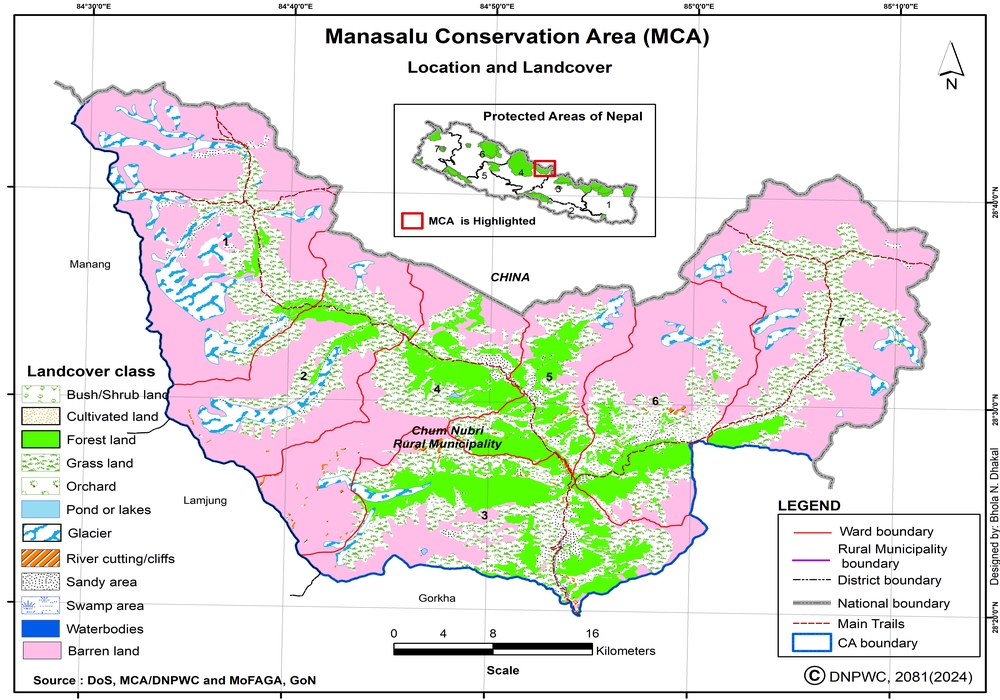
Quick Facts
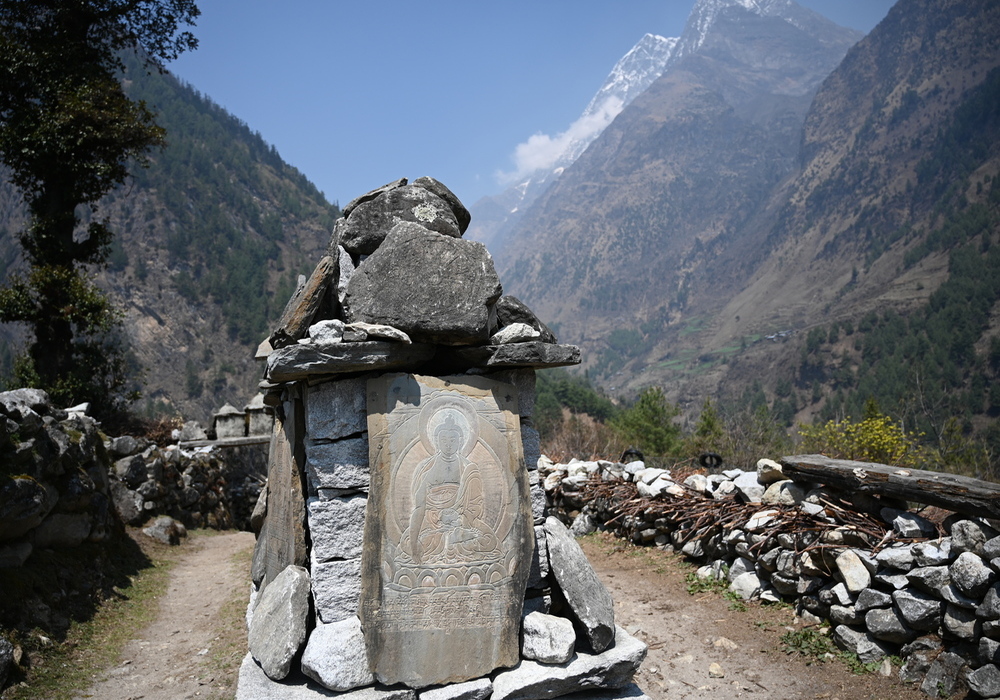
- Location: Gorkha District, Nepal
- Established: 2055 BS (1998 AD)
- Area: 1,663 sq. km
- Highest Point: Mount Manaslu (8,163 m)
- Villages: About 30, with over 7,000 residents
- Management: National Trust for Nature Conservation (NTNC)
Getting There
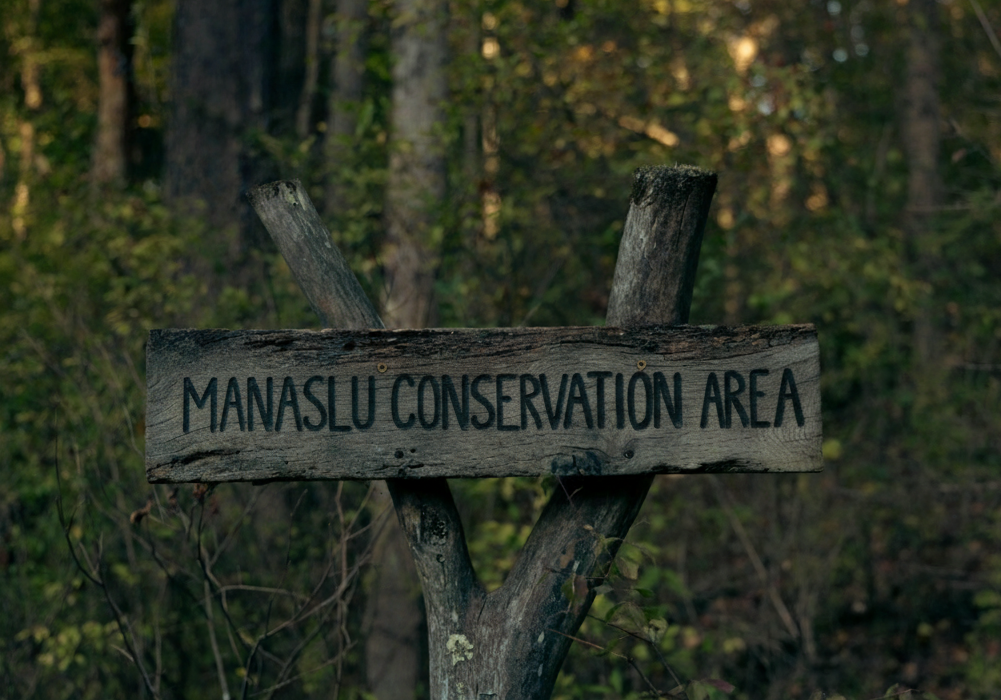
Manaslu Conservation Area is among the trekking area in Nepal which lies at Gorkha district of Nepal and gives variety landscapes, Cultural village and Mountain views. To get to this end-of-the-world location, one has to fly or drive, before eventually trekking.
By Air and Road:
- You can board a plane to the Tribhuvan International Airport in Kathmandu, which is the main international airport in Nepal.
- Locally you can choose to drive or take a bus from Kathmandu to Soti Khola or Jagat as these are the two places where the Manaslu region starts. It will be about 8 – 10 hours breath-taking hills and rivers drive.
By Road Only:
- Another option is to drive through Arughat to the trek starting points that are located directly from Kathmandu but the roads are usually in bad conditions and the journey may vary from 8 to 12 hours depending on the situation.
- Private jeeps are always quicker and more comfortable than public buses, particularly for those travelers who have limited time.
Trekking Start Points:
The majority of the treks, for example, the full Manaslu Circuit are the ones that get to Soti Khola, Jagat, or Machha Khola first. The people who are going to do the Manaslu Short Trek have the places of Samagaon and Lho as their starting points where they can have a shorter but equally beautiful experience.
Tips:
- The roars of nature are sometimes muffled because of monsoon and landslides, so always plan some extra travel time.
- Ensure you have taken the Manaslu Restricted Area Permit and ACAP permit well in advance for these are the only documents that allow you to enter the conservation area.
- It would be extremely helpful if you hire a local tour guide or driver they can make your trip more comfortable and can help you to navigate the remote route safely.
Flora and Fauna
Wildlife
The MCA is the natural habitat of 33 mammal species that include the snow leopard which is very difficult to find, red panda, Himalayan tahr, musk deer, and grey wolf. Over 110 species of birds can be found by the bird enthusiasts such as Himalayan monals and snow partridges. These diverse habitats are the main sources of the area’s rich biodiversity.
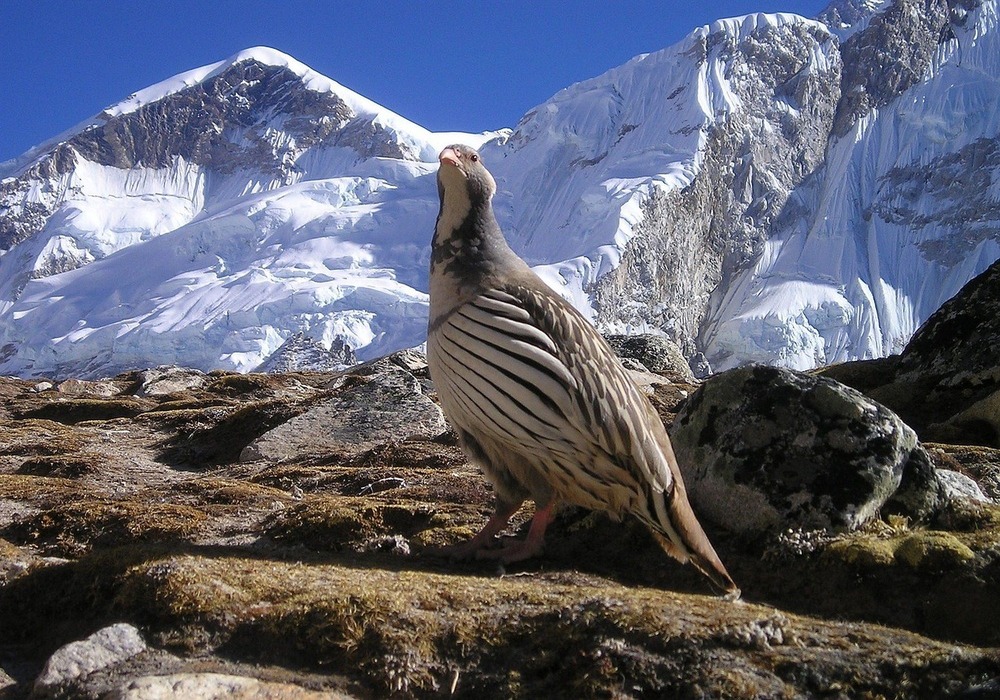
Vegetation
The region contains about 2,000 plant species, including 11 kinds of forests. Vegetation differs from subtropical forests to the alpine meadows, sustaining both wildlife and local livelihoods.
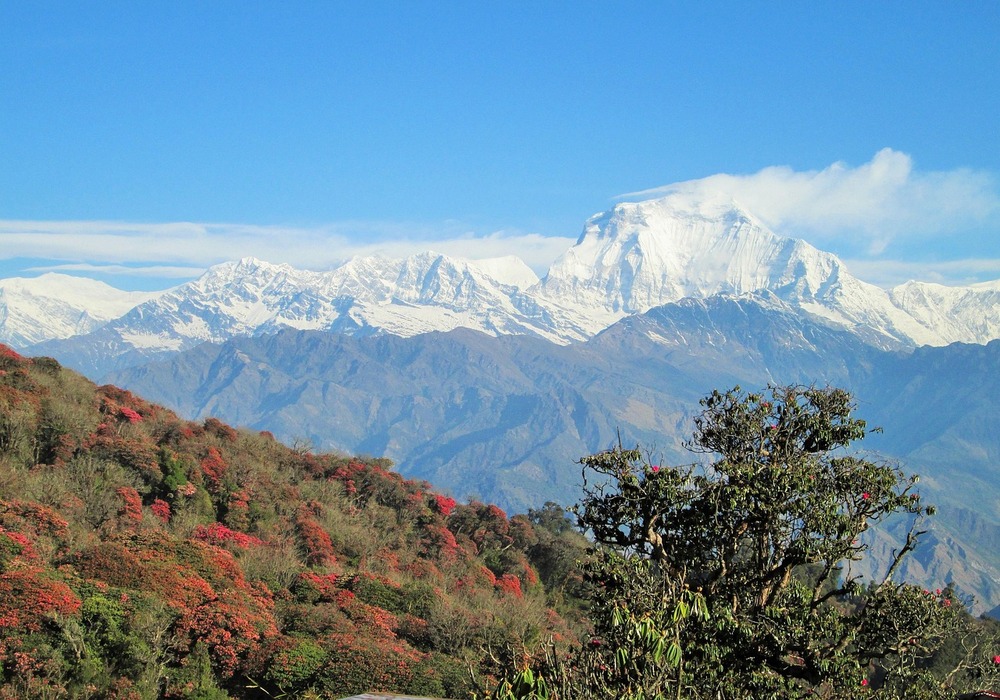
Protected Species
The Manaslu Conservation Area (MCA) in Nepal is a biodiversity hotspot and home to a diverse array of protected species across various taxonomic groups. Some major species include:
| SN | Common Name | Scientific Name | IUCN Status |
|---|---|---|---|
| 1 | Snow Leopard | Panthera uncia | Vulnerable |
| 2 | Red Panda | Ailurus fulgens | Endangered |
| 3 | Musk Deer | Moschus spp. | Vulnerable |
| 4 | Himalayan Tahr | Hemitragus jemlahicus | Near Threatened |
| 5 | Himalayan Black Bear | Ursus thibetanus | Vulnerable |
| 6 | Brown Bear | Ursus arctos | Least Concern |
| 7 | Blue Sheep | Pseudois nayaur | Least Concern |
| 8 | Himalayan Serow (Tharal) | Capricornis thar | Vulnerable |
| 9 | Snowcock (Himalayan) | Tetraogallus himalayensis | Least Concern |
| 10 | Satyr Tragopan (Munal) | Tragopan satyra | Near Threatened |
Geography and Terrain
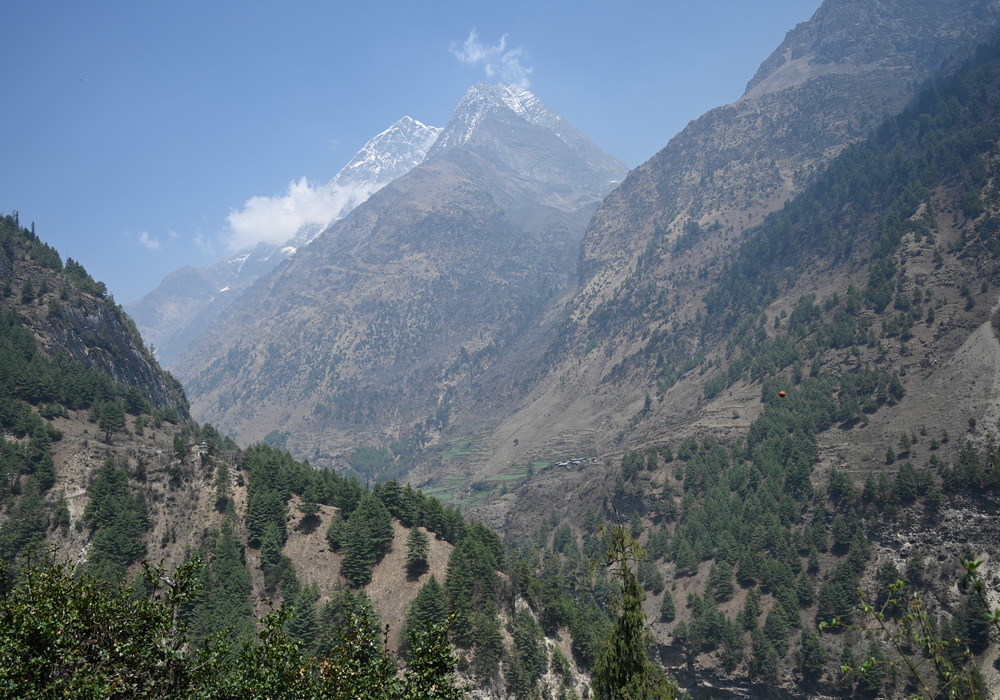
Manaslu Conservation Area is home to a mix of mountains, glaciers, diverse animals, rivers, and forests. The lower valleys are green and fertile, while the higher altitudes have alpine meadows and snowfields. Beautiful gorges that have been cut by rivers like Budhi Gandaki are giving spectacular views to hikers.
Key Attractions of Manaslu Conservation Area
Manaslu offers a blend of adventure, culture, and nature. Here are some of the top activities and experiences you can discover:
- Trekking
- Bird Watching
- Mountaineering
- Wildlife Exploration
- Monastery Visits (Pungyen Gumba, Rachen Gompa)
- Scenic Mountain Views
- Nature and Wildlife Photography
- Side Trips (Manaslu Base Camp, Birendra Lake)
Manaslu Conservation Area Hiking Routes
Manaslu Circuit Trek
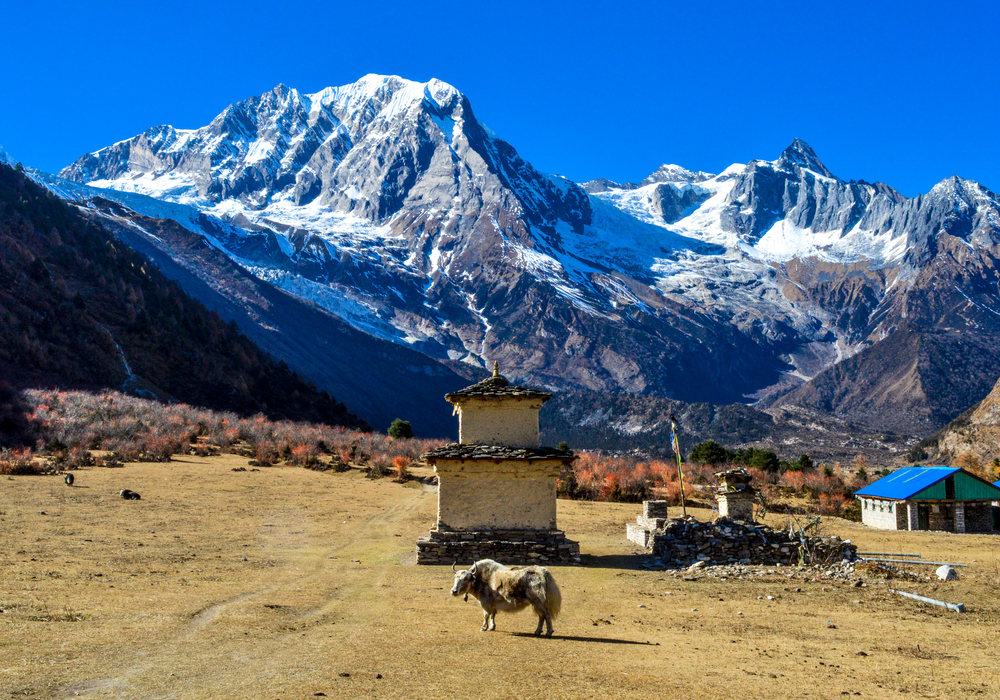
Manaslu Circuit (177 kilometers) is a perfect trek for those who are looking for adventure. In this trek, the route goes through a wilderness area that is not easily accessible. Climbers cross Larkya La (5,106 m), one of the high passes, and get views of various mountains that stretch as far as the eyes can see.
Tsum Valley Trek
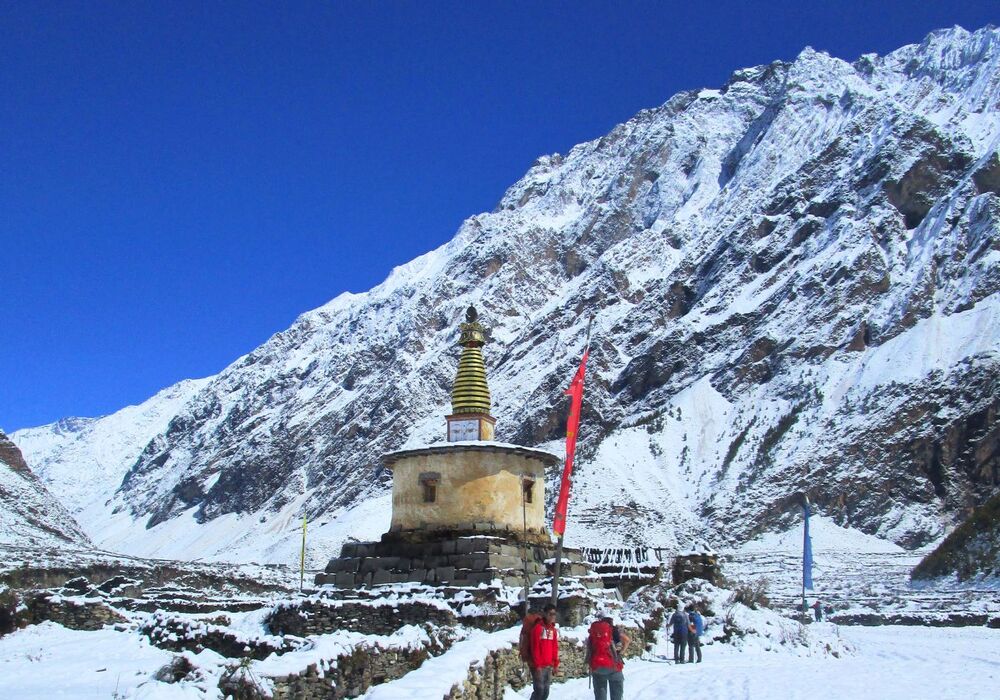
In this remote region, the Tsum Valley offers mix of rich Buddhist tradition, monasteries and meditation caves. It is perfect for those looking for spiritual and cultural experiences along with trekking.
Short Treks in Manaslu Region
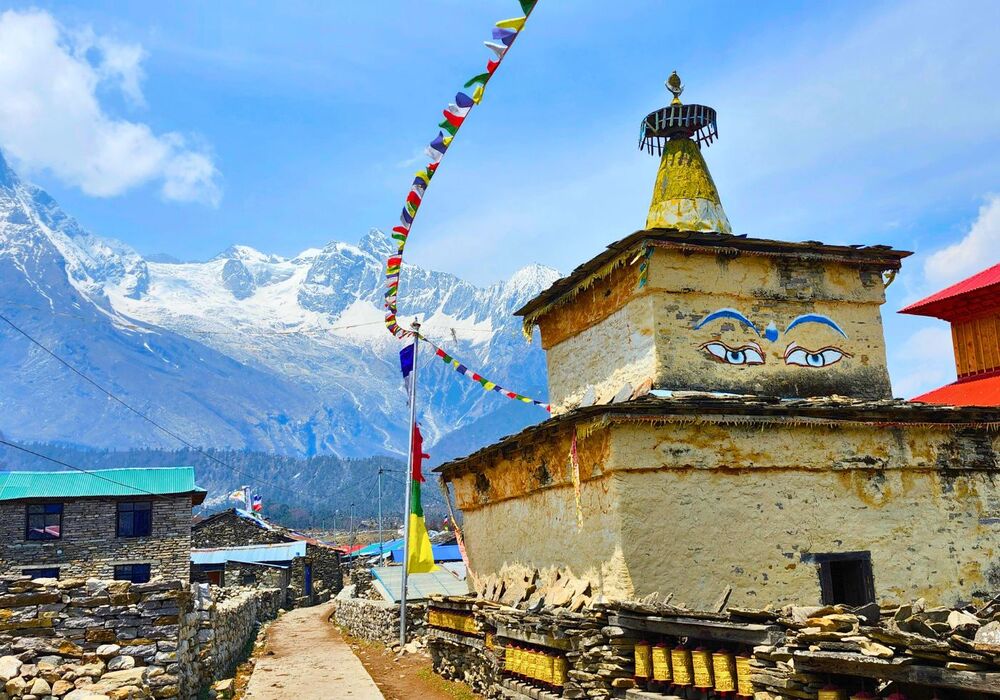
For travelers with limited time, the Manaslu Short Trek covering key villages like Samagaon and Lho, provides spectacular views and cultural experiences without completing the full manaslu circuit.
Permits for Manaslu Trekking
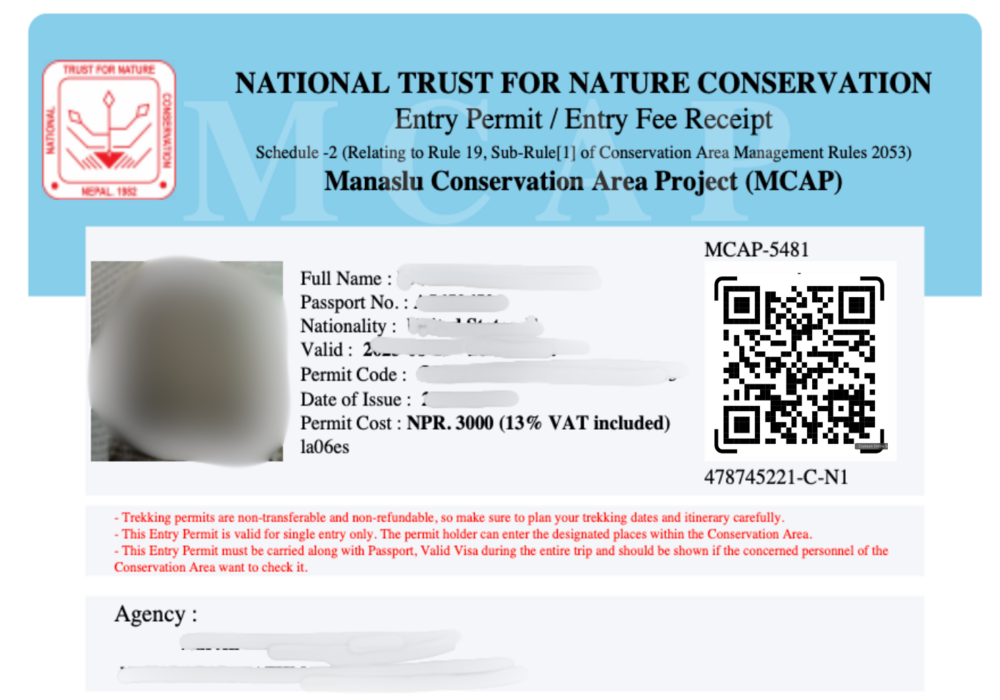
To trek in MCA, you require the following permits:
- Manaslu Restricted Area Permit (RAP) Permit
- Manaslu Conservation Area Project (MCAP) Permit
- Annapurna Conservation Area Project (ACAP) Permit if exiting via Annapurna
NOTE: A licensed guide and a minimum of two trekkers per group are mandatory. These permits can be obtained via authorized travel agencies in Kathmandu or Pokhara.
Best Time to Visit Manaslu
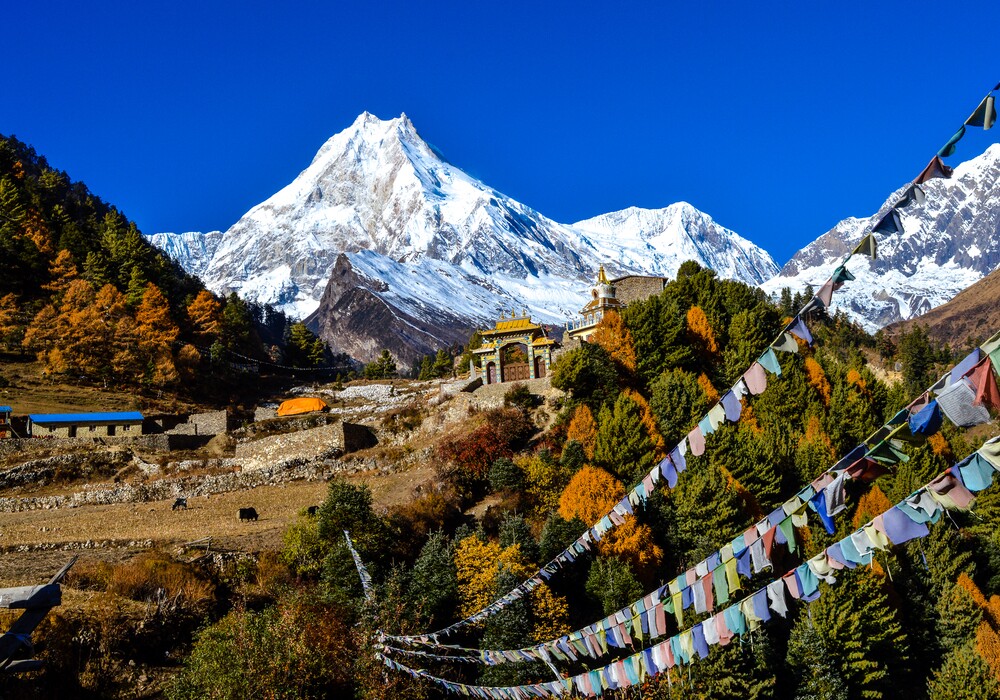
If you are going to plan your trek, it is very important to know the influence of the seasons on the region of Manaslu. The different seasons not only offering various challenges but also their own beauty in the form of clear skies, blossoming flowers, snow on the peaks, and even the monsoon rains.
- Spring (March–May): The rhododendrons begin to bloom, the sky is clear and the weather is nice.
- Fall (September–November): The best time for trekking with the weather being stable and the views breathtaking.
- Winter (December–February): The snow remains on the peaks of the mountains while the villages in the valleys get lower and are reachable.
- Monsoon (June–August): There is a heavy downpour, the paths are dangerous and trekking is not advised.
Culture and Communities
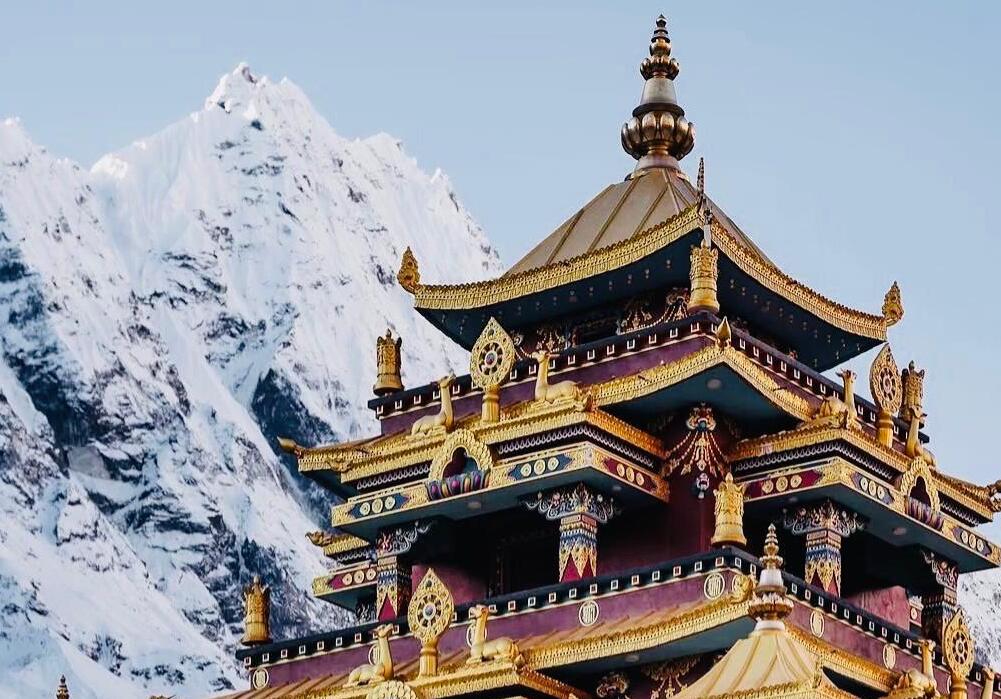
The MCA has the Gurung, Tamang, and Tibetan people as its residents. Among others, villages like Samagaon and Lho are homes of monasteries, mani walls, and chortens. The people worship Tibetan Buddhism, do farming and raising yaks. One of the celebrations like Losar symbolizes spirited cultural traditions.
Responsible Trekking Tips
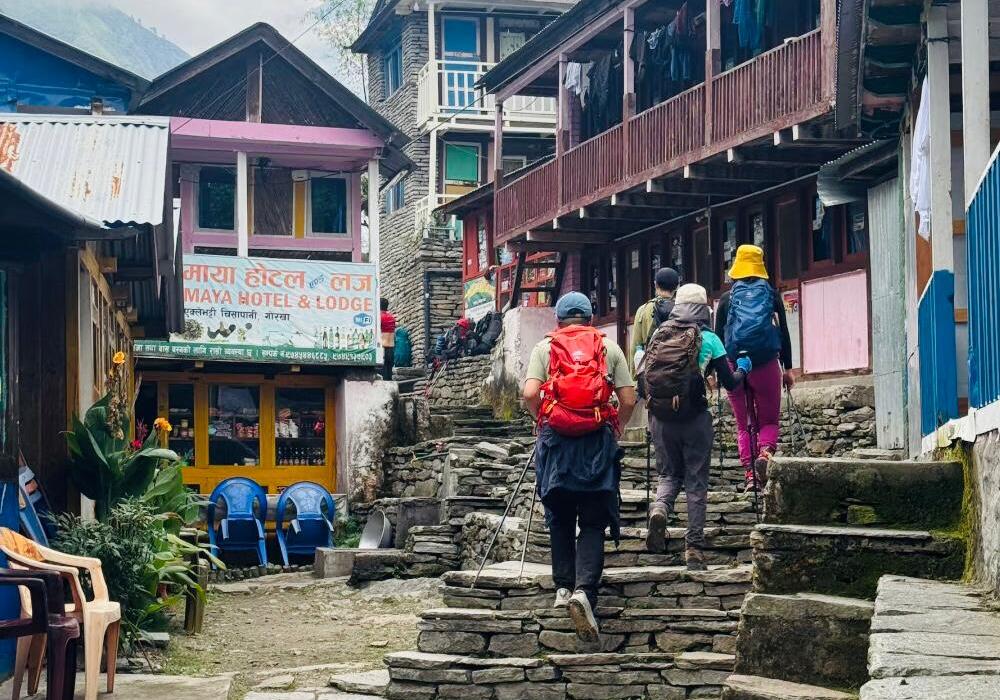
Manaslu region trekking is nothing less than an adventure, but along the way, it is also about being in harmony with nature and showing respect to the local communities who live in the area. For a trip that is both safe and enriching, follow these tips:
- Respect local culture and ask for permission before taking photographs.
- Don't go off the marked trails to avoid harming the habitats of the animals.
- Contribute to the local community by employing the services of a local guide as well as the porters and homestays.
- Carry all the trash outside and do not use plastic that is made for one-time use.
- Look at animals in nature from far away and don't feed them to be safe.
FAQs About Manaslu Conservation Area
What is Manaslu Conservation Area?
The Manaslu Conservation Area (MCA) is a protected region located at Gorkha District of Nepalwhich was established in 1998 AD to conserve biodiversity, forests and the natural Himalayan environment around Mount Manaslu (8,163 m) covering 1,663 sq. km. It includes a variety of ecosystems ranging from subtropical forests to alpine meadows and glaciers. The area is habitat to endangered species like snow leopards, red pandas, Himalayan tahr and over 110 species of birds as well as culturally rich villages of Gurung, Tamang, and Tibetan inspired traditions.
Which is the biggest conservation area of Nepal?
The Shey-Phoksundo National Park at Dolpa district is the largest protected area in Nepal covering about 3,555 sq. km followed closely by the Annapurna Conservation Area (7,629 sq. km) and Manaslu Conservation Area (1,663 sq. km). MCA is one of the largest community managed conservation areas, combining biodiversity preservation and sustainable tourism.
How much is a Manaslu permit?
Trekking in the Manaslu Conservation Area require these permits:
- Manaslu Restricted Area Permit (RAP): Approximately US$70 per person per week (prices vary for foreigners).
- Manaslu Conservation Area Project (MCAP) Permit: Approximately US$50–60 per person.
- Annapurna Conservation Area Project (ACAP) Permit: Required if exiting via Annapurna, around US$30 per person.
Important Info: All permits must be obtained via a licensed trekking agency and a guide is mandatory.
Is Manaslu harder than Everest?
Manaslu Circuit Trek is rated as an average to hard level challenge that requires a good amount of physical fitness, proper acclimatization and some trekking experience. If we compare the two, the Everest Base Camp (EBC) Trek is lighter in terms of physical efforts but has higher altitude (EBC 5,364 m, Larkya La Pass 5,106 m). Manaslu has less noise, is less reachable and also the additional inconvenience of a restricted area permit and guide making it more difficult in terms of handling. Most of the trekkers talk about Manaslu as a fascinating trip because of its isolation, wide culture, and risk factors along with even a bit lower maximum altitude than the Everest Base Camp.
Conclusion
Manaslu Conservation Area is a valuable Himalaya heritage of Nepal, a region that shows the climatic and geographical diversities that harmonize with an excellent habitat of various wildlife species. The shining Mount Manaslu and the colorful prayer flags of the area at its center, the park offer it all from thick alpine forests to fish and other creatures living in the rivers and lakes. It is also home to the snow leopard, red panda, and the Himalayan Tahr, which are rare in the area. Travellers hike through colourful villages, explore ancient monasteries and see the Tibetan lifestyle of Gurung and Tamang communities its difficult to keep your adventurous spirit dormant Youbare but destined to walk on one of these raw commercial caravan routes between Tibet and Nepal.
Whether you choose the Manaslu Circuit Trek, one of Nepal’s most strenuous treks or quieter Tsum Valley, the conservation area will cater to all variety of trekkers. With proper permit and licensed guide to make the exploration safe, guests will feast their eyes on majestic landscape, wildlife and genuine Himalayan culture. Manaslu Conservation Area is certainly a region which will ensure you have a trip of lifetime free of the crowds and replete with natural experience.







